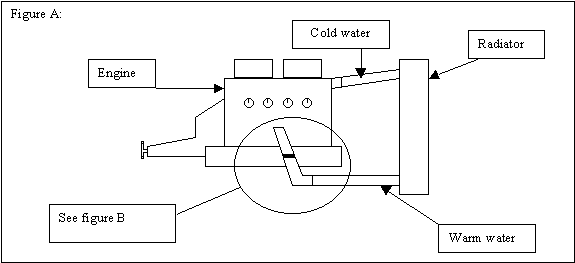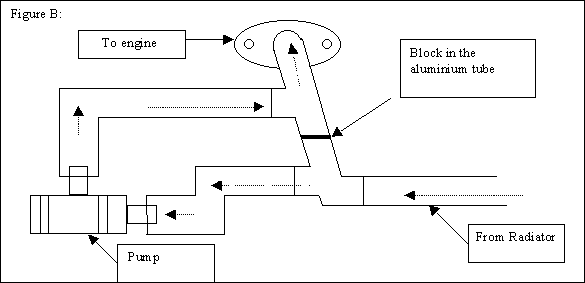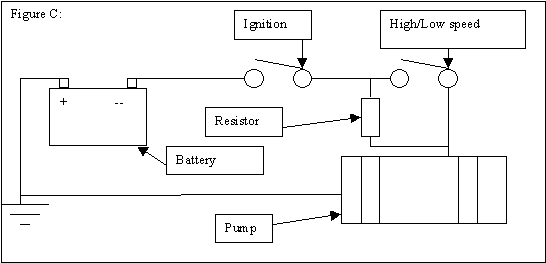
Termosyphoon cooling.
Written by Harald Sakshaug, (Circa 8/98) driving the #105 in Norway. (please excuse my poor English)
I have had great joy reading the technical articles for Morgan Restoration assembled and written by John T. Blair. Morgans are mostly very similar in construction, but there are variations regarding the engines and gearboxes.
Heating, as I understand it, is a common problem on Morgans,. my 1936 is powered by a Coventry Climax, equipped with termosyphon cooling system is no exception.
All early Morgans using the Coventry Climax engine, and even the early Ford engines were running extremely hot. On my car all sorts of trouble arose from that problem. On hot summer days, the engine was running at 95-98 degrees Celsius (203-208 degrees Fahrenheit).
This causes firstly the engine to be very hot, since there is no oil cooler or filter, and secondly the problem of creating gas bubbles in the carburetor. This producing small margins for hill climbing in low speeds.
In wintertime, just the opposite, the engine is not getting warm at all, at maximum temperatures around 37 degrees Celsius (98 degrees Fahrenheit). This causes extensive wear and slow oil flow, overheating the bearings. (In this old engine I have found 50SAE monograde oil, or 10-60 multigrade oils to be the only solution for obtaining correct oil pressure in really hot days.)
Well anyway, heating was a problem, and needed a solution.
The cooled water in the radiator falls down through the radiator and enters the engine by the bottom pipe. There it warms up and raise to the top, because the heated water is lighter than cold water. This makes a flow or current of water, which cooles the engine not using a pump. This system works fine in cold weather, but when it gets hot in the air, the water is not cooled enough to produce the necessary flow. I’m not sure, but I would guess a difference of over 40-50 degrees is needed to keep the flow of cooling water big enough. This is hard to obtain on a warm summer day.
So the solution was a pump, and a rather small electrical unit from an inboard boat engine was purchased. The cold water pipe from the bottom of the engine/radiator was modified as in Figure A, greating an outlet hose mount, and an inlet hose mount on the aluminum tube;. this enabling a connection point for the electrical pump. The power to the pump was connected to the ignition, so the pump started when the ignition was turned on.

Hmmm… major problem, stopping the pump stopped the flow of water for good so that could not be done. The solution had to be two speeds on the pump.
I used a small resistor from an ignition system (Ed. a ballast resistor). The resistor reduces the voltage under normal driving; the same is shorted when the starter motor is running, obtaining necessary power to spark the plugs in cold weather with low battery power.
Look at figure C to see the wiring diagram as connected in my car.

I connected my pump both ways, and was not able to find any big difference. When the flow of water is running from from bottom of the radiator and upwards (opposite direction as normal) the top get more cooled. But on the other hand again the flowing effect of the termosyphoon cooling is working against the pump… I'm not shure what way is the best and I have returned the flow to the "normal" way, down the radiator and up the engine….
The other problem I have is the fear of the pump stopping on me, because there is no indicator of water temperature, except for the gauge in the radiator. And if the pump stops the engine gets hotter and the radiator gets cooler. So I am always suspicious if the engine appear to cool down for no reason when driving. :-)

Yours,
Harald Sakshaug
Return to the Index of Tech. articles